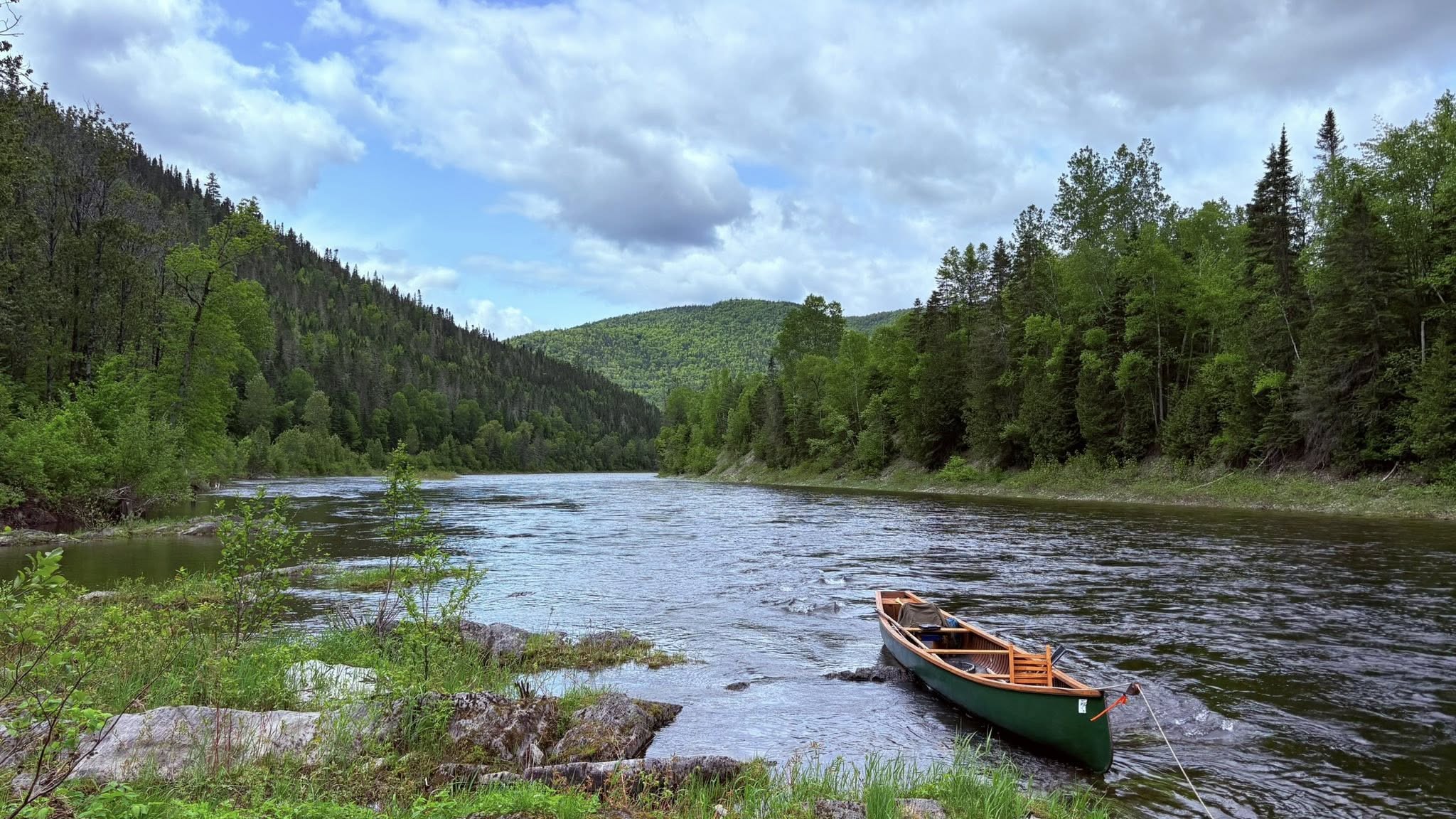
Subscribe & stay up-to-date with ASF

Nathan Wilbur has been selected as the next President of the Atlantic Salmon Association as of July 11th.
“It is both humbling and exciting to be taking ASF into its next chapter as President,” he said. “I really am honoured to be part of such a committed and passionate team.”
Nathan joined ASF in 2015, and has most recently been the Vice-President of Regional Programs. He is a professional engineer with extensive Atlantic salmon conservation experience, a lifelong angler, hunter, and a passionate conservationist.
“Atlantic salmon have been a guiding force and inspiration throughout my life,” he said.
After an executive search that attracted candidates from across North America, Nathan was selected by ASF’s Canadian and U.S. Boards of Directors to follow Robert Otto, who was the interim President and CEO since March 2025.
Nathan had this message for Rivernotes’ readers:
“Rivernotes has been one of ASF’s longest standing and most valued communications over the years. Thank you for being such loyal readers and supporters, and in doing so, helping to build the Atlantic salmon conservation community. We’ll strive to continue building and improving Rivernotes, and we wish you all tight lines and good memories on the river.”
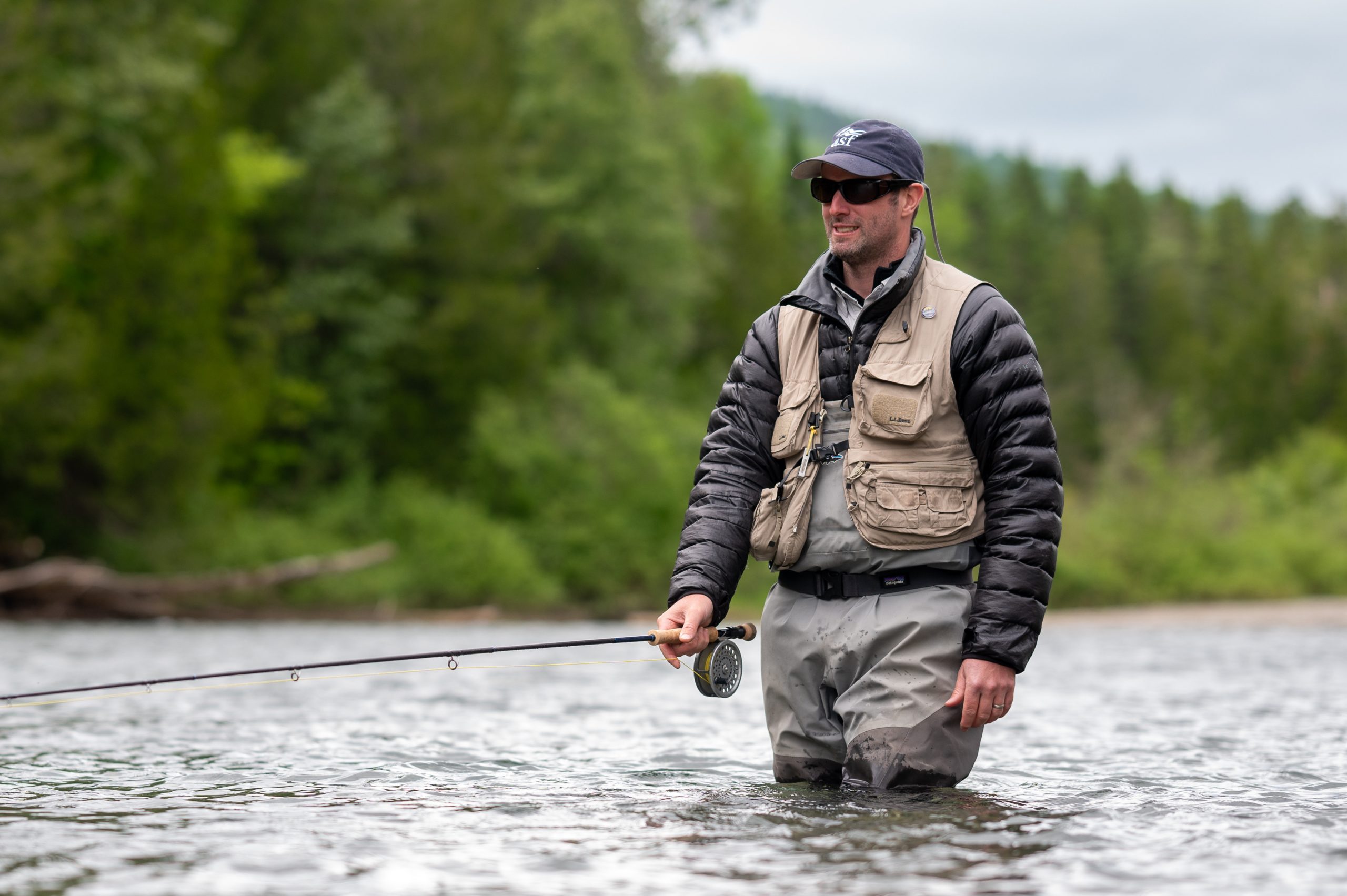
In this week’s edition of Rivernotes, we have a lot of exciting projects, and mid-summer river conditions.
In New Brunswick, the Nepisiguit River moved from “morning-only” angling to closing a popular portion of the river entirely. The Miramichi has moved to reduced angling hours, along with the closure of 32 pools. Newfoundland and Labrador has some “morning-only” angling rivers as of today as well.
Elsewhere in the Atlantic region, research teams are busy. We have reports about systems to detect returning salmon, and water quality monitoring stations. As well as largely untouched tributaries where new data will now be collected.
We have a river condition report from Quebec, and counting fence data from Maine. We also have a great written submission about a community “flybrary” in Cape Breton. And a special contribution from the Ellen’s Creek Watershed Group in PEI.
ASF’s Nova Scotia Program Director, Deirdre Green, had the opportunity to accompany Fisheries and Oceans Canada as they investigated potential invasive species in Nova Scotia.
And we start this week in Newfoundland and Labrador, where students are leaving from Nain — the most northern permanent settlement in Labrador, in the Nunatsiavut region — by boat, on an expedition with the Students on Ice (SOI) Foundation.
In Newfoundland and Labrador, ASF’s Program Director, Kim Thompson, has set out on an expedition in northern Labrador. She is on the Nunatsiavut to Nunavik Expedition with Students On Ice, as an educator, and providing us with updates. She has also gathered reports on river conditions, and an upcoming event. She writes:
“Another week drier in the province. Rain is desperately needed as another province-wide fire ban prohibiting outdoor fires on forest land or within 300 metres of forest land came into effect on July 11th until further notice. Gander Bay Indian Band Council Chief Calvin Francis reports that “water levels on the Gander are very low and water temperatures high, fishing is fair to good in various places. Nevertheless there are a lot of salmon anglers still present on the rivers”.
Tony Chubbs of the Labrador Fishing and Hunting Association notes the month of June was very cold and wet, so river levels were high and cool, boding for good conditions for salmon entering into the Kenamu.
“We don’t start rod fishing the Kenamu until mid-late July as the fish don’t get up to us ’til then,” he said. “Although we just had a sweltering 35°C weekend, we are now into cooler temps in the low-mid 20°C’s, and getting some rain. So this all looks positive for the river water levels and temperatures for our rod season.”
The Torrent River Salmon Interpretation Centre and Fishway in Hawkes Bay is open daily and they are once again counting adult salmon returns for the season. On July 17th from 2-4pm you can learn to tie your own fly, the Dirty Bomber, with creator Paul White. To register for this fly-tying event, call 709-248-4066.
While the recreational salmon angling season is well underway in the province, myself and two of my colleagues have the honour of being part of a new ASF partnership with the Students On Ice (SOI) Foundation. We are thrilled to join the 2025 Nunatsiavut to Nunavik Expedition as educators, contributing to the conservation partnership.
Nunatsiavut to Nunavik Expedition 2025 – SOI Foundation offers a unique hands-on learning experience for youth from across Canada, Greenland, Monaco, and Alaska, guided by Nunatsiavummiut (Labrador Inuit) and Nunavimmiut (Nunavik Inuit).
After two days of team building and leadership initiatives in Ottawa, our journey north to Nain to meet the ship has begun. Once on board the MV Polar Prince, we will sail north to Hebron, Torngat Mountains National Park, Killiniq Island, Ungava Bay, George River, and Kuujjuaq. Follow our incredible learning journey on Facebook.“

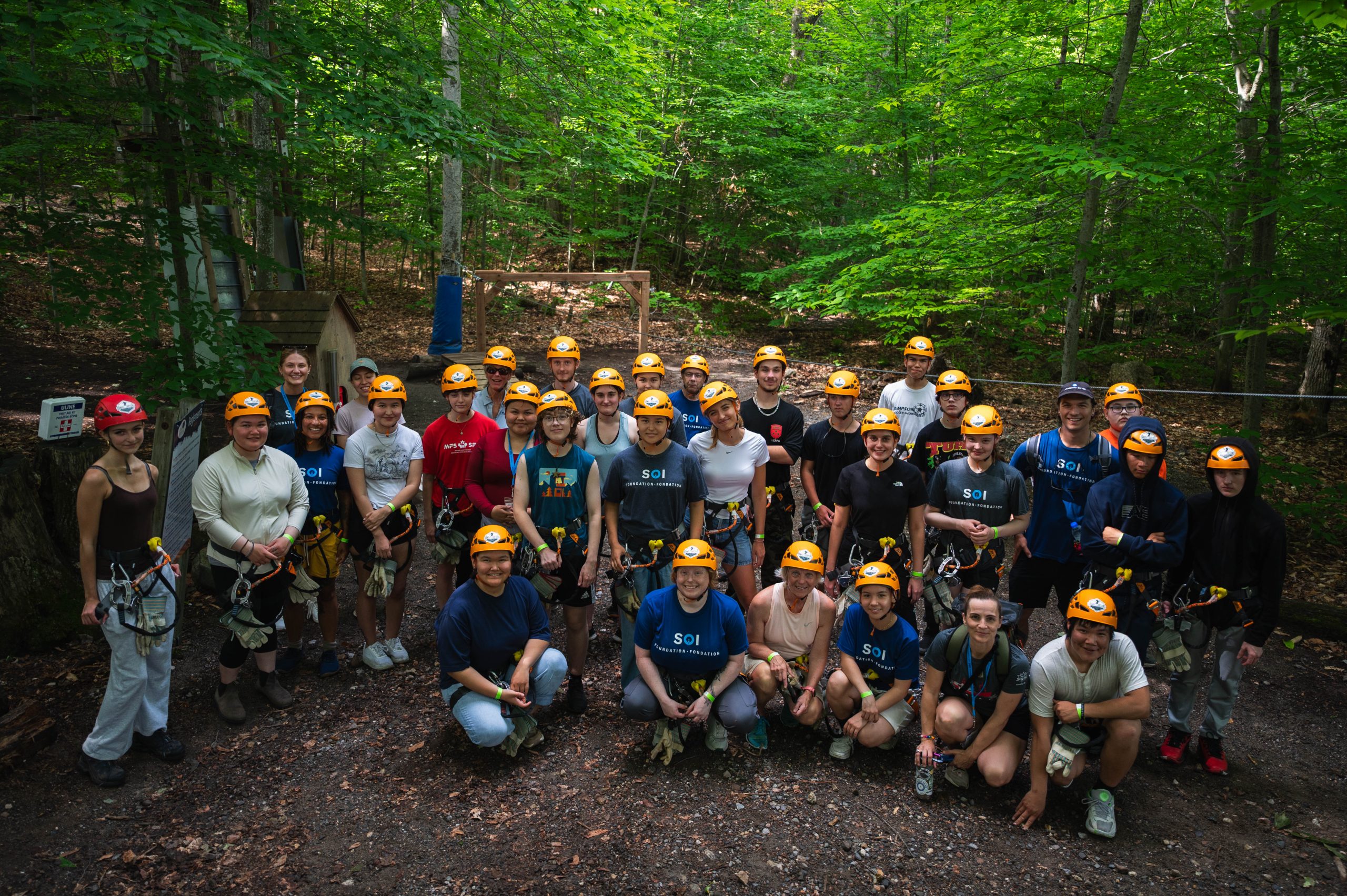
Quebec
In Quebec, the rivers are feeling the effects of the mid-summer weather. But, there’s hope in the forecast. ASF’s Quebec Program Director, Charles Cusson writes:
“En règle générale, la plupart des rivières ont besoin d’une certaine coopération de dame Nature. En visitant le site de Météo Média ce matin, le vœu de plusieurs pêcheurs sera exaucé. Surtout dans la région d’Amqui dans le bas St-Laurent et Murdochville en Gaspésie. De sérieuses précipitations auront l’effet d’améliorer les conditions de pêche et de réanimer Salmo dans les prochains jours.
La présence accrue de madeleineaux comparativement aux 2 ou 3 saisons précédentes est un message qui se propage en ce moment. Si les conditions sont favorables, les décomptes de la semaine prochaine révèleront d’importantes données.
Nous sommes reconnaissants que les rivières telles la Matane, Mitis, Matapédia et la Madeleine fournisse des données de façon journalière à propos des montaisons et/ou les prises.
Au plaisir de se voir le long d’une rivière cet été et n’hésiter pas de partager vos expériences de pêches, vos observations et vos photos pendant la saison 2025.”
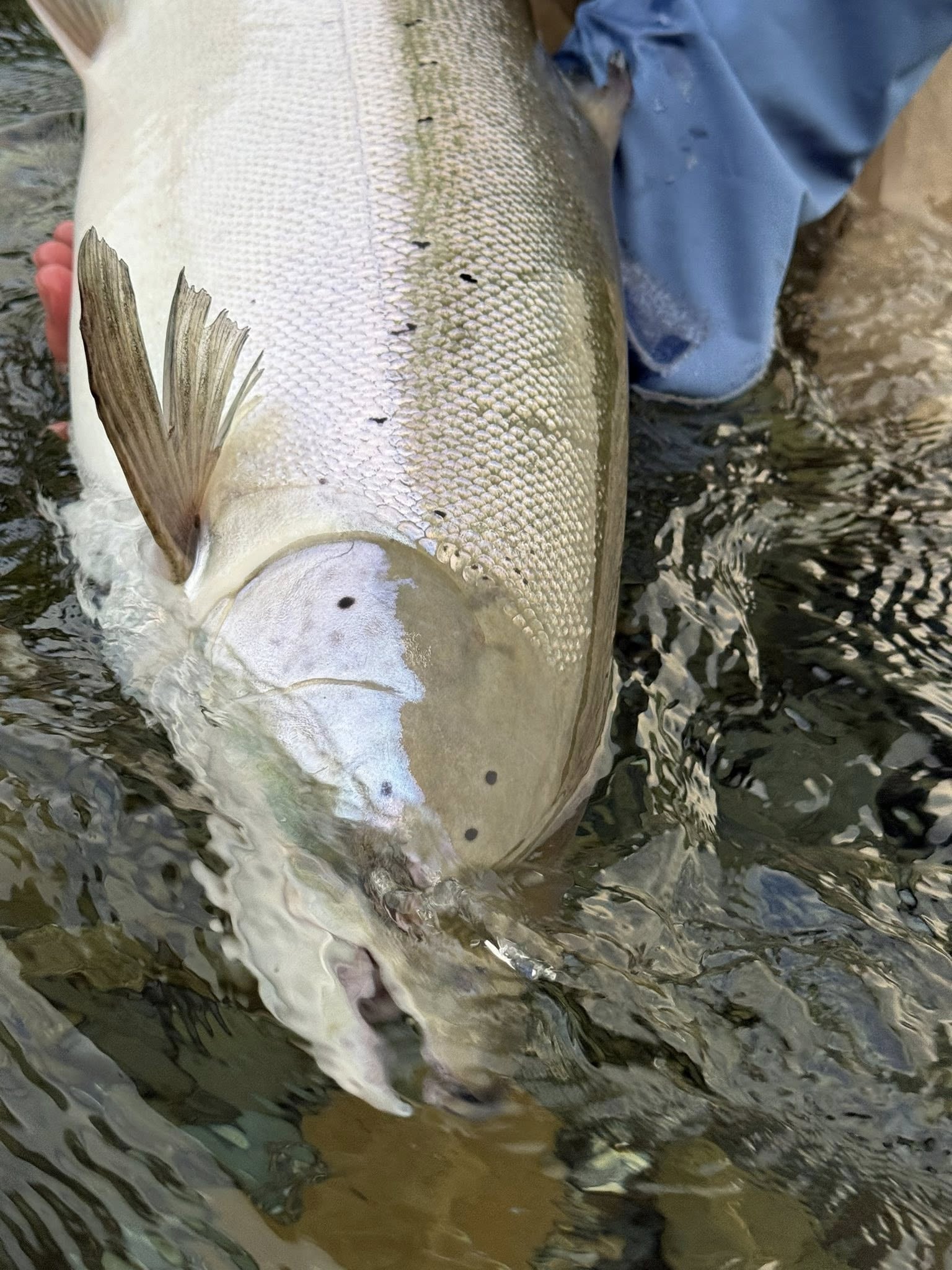
Charles also provided his report in English:
“At this point in the season, most rivers need some cooperation from mother nature. When I visited the Weather Network website this morning, the wishes of several fishermen will soon be granted, especially in the Amqui region in the Lower St-Laurence, and Murdochville in the Gaspé. Serious precipitation will improve fishing conditions and revive Salmo’s desire to take a fly in the coming days.
The increased presence of grilse compared to the previous 2 or 3 seasons is a message that is spreading quite a bit. If conditions permit, next week’s counts will reveal important data.
We are grateful that rivers such as the Matane, Mitis, Matapédia and Madeleine provide daily data on returns and/or angling results.
You will also find enclosed the June 2025 statistics for the Cascapedia River.
I wish you Tight Lines and memorable experiences with Salmo this summer. Until then, I hope to meet you along a river this summer and please don’t hesitate to send me details of your fishing experiences and photos during the 2025 season.”
Last week, ASF’s Program Director for New Brunswick, David Roth has also been leading the installation of the cutting-edge systems that will detect returning tagged salmon. He also has some comparable fish counts from some barriers on the Miramichi River system to share. He writes:
“On the Dungarvon River, fish counts at the barrier have reached 22 grilse, 5 small salmon, and 6 large salmon since its installation on May 28, for a total of 33 fish as of July 6. This marks a significant improvement over 2024, which was a record-low year, when only 16 fish had been counted by this time.
Unfortunately, the same positive trend hasn’t been observed on the Northwest Miramichi barrier, where only 8 grilse, 12 small salmon, and 5 large salmon—a total of 25 fish—have been recorded so far. This is down from 35 at the same time last year. While it’s likely that more fish have made their way upriver since, continued low water levels and high temperatures are limiting upstream movement. It will likely take a significant rainfall event to trigger a larger migration toward the headwaters.
PIT Array Systems on the Northwest Miramichi
Over the past week, I have been leading the installation of PIT (Passive Integrated Transponder) array systems across the Northwest Miramichi River. These systems are designed to detect returning adult Atlantic salmon that were tagged by ASF and partners as part of the Bass Blockade Bypass / Trap-and-Truck Solution project (learn more here).
This season will serve as a pilot period to test and refine the system before the return of marked fish begins in 2026. Once fully operational, these PIT arrays will be the largest of their kind on Canada’s East Coast, and we’re excited to add this cutting-edge technology to our monitoring toolkit.”
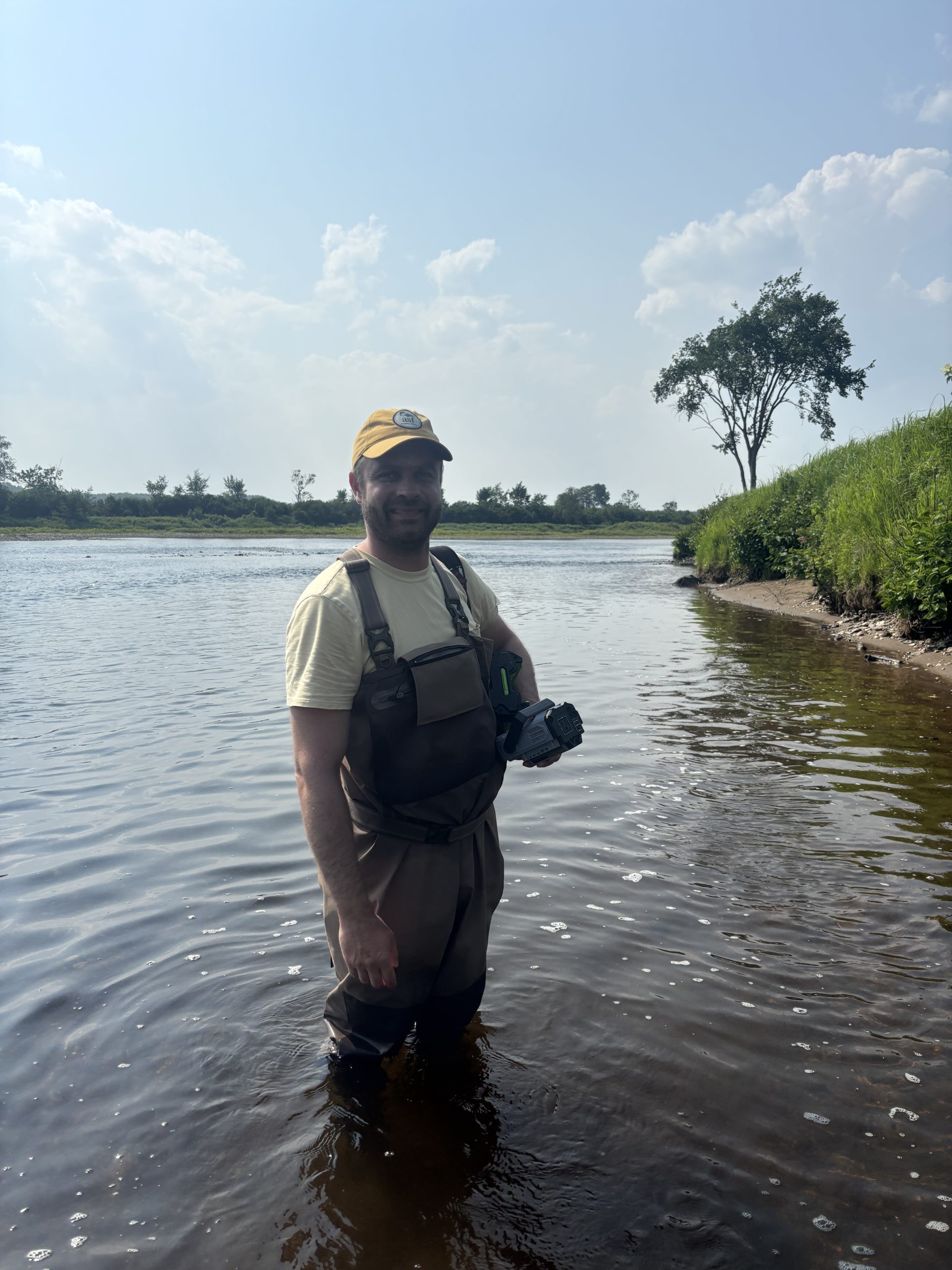
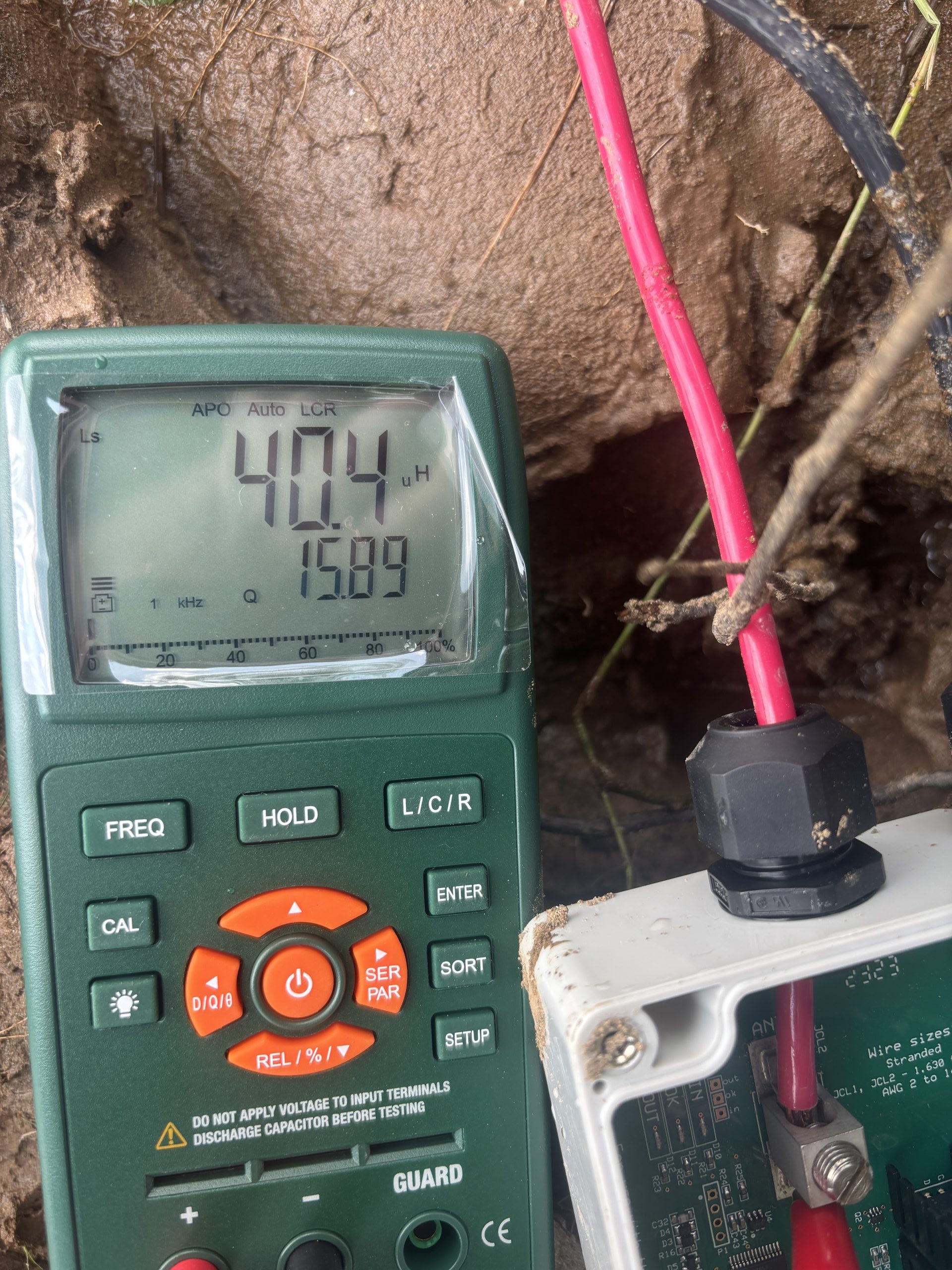
David also shares important findings published by Dr. Ryan Hill news from the Wolastoq / Saint John River:
“We want to highlight new research from the Wolastoq (Saint John River), where Dr. Ryan Hill has published important findings in his paper:
Dr. Hill’s study shows that only 19% of fish using the trap-and-transport system successfully passed the dam, with many experiencing significant delays in migration. However, there is a silver lining—his data suggests that more salmon are present in the river than DFO previously believed, opening the door to improved monitoring and management.
At the most recent Outer Bay of Fundy Atlantic Salmon meeting—hosted by DFO with participation from ASF and other stakeholders—there was a strong focus on developing alternative collection methods to help ensure more of these returning salmon are successfully captured and accounted for.”
ASF’s Research team was on the Miramichi last week, getting ready to deploy research monitoring stations. Valérie Ouellet, ASF’s Vice President of Research and Environment writes:
“Graham Chafe has been working on the research monitoring stations over the winter and we are now testing some designs. These stations monitor temperature, dissolved oxygen, and conductivity.
It is easier to test our equipment when we can work with partners such as Wayne O’Donnell at Rocky Brook camp, where we can install stations and have people help look over them.
On July 8, Graham, Val, and Ellen met with Wayne to go through some logistics, and the station will be deployed shortly.”
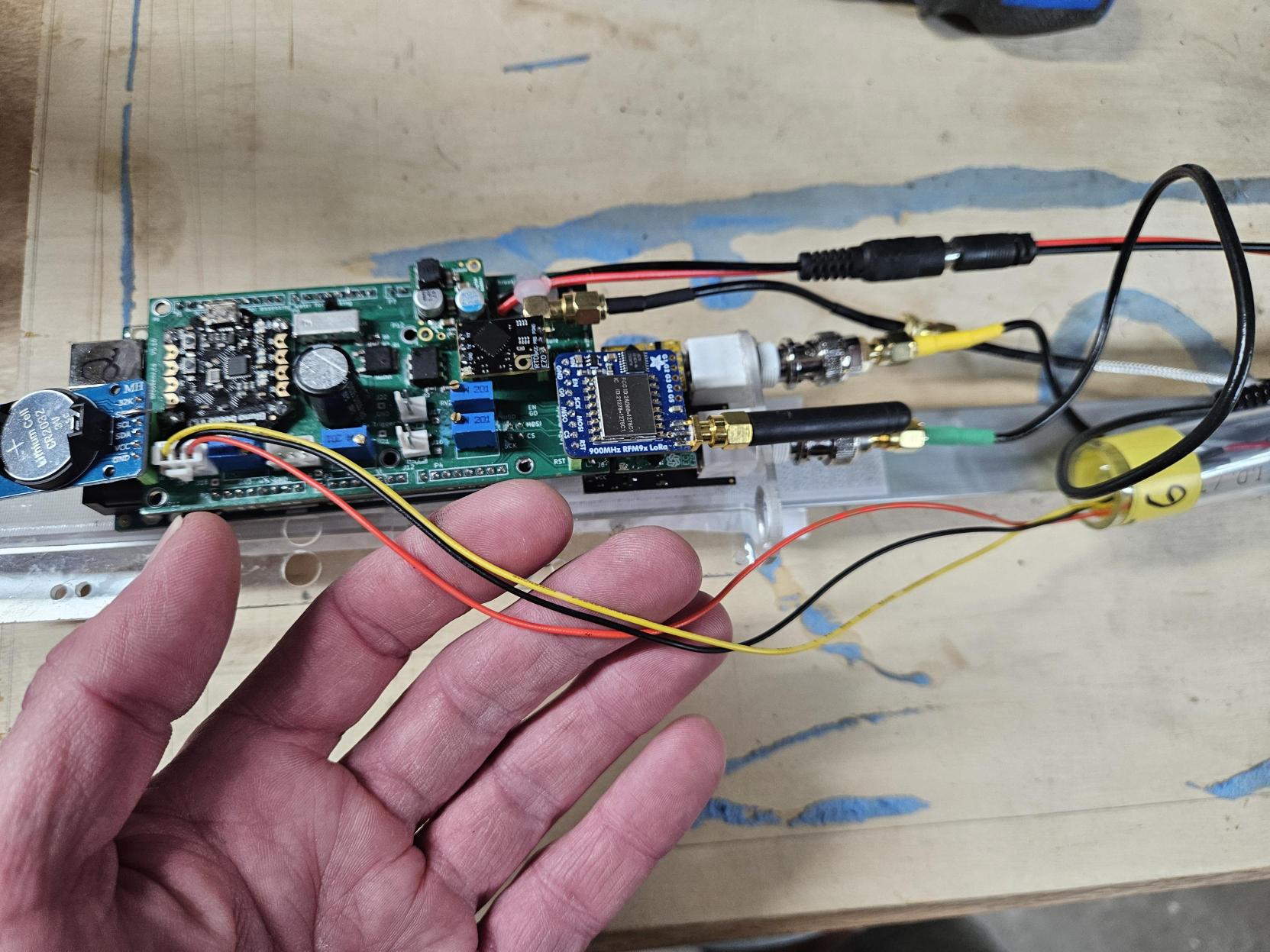
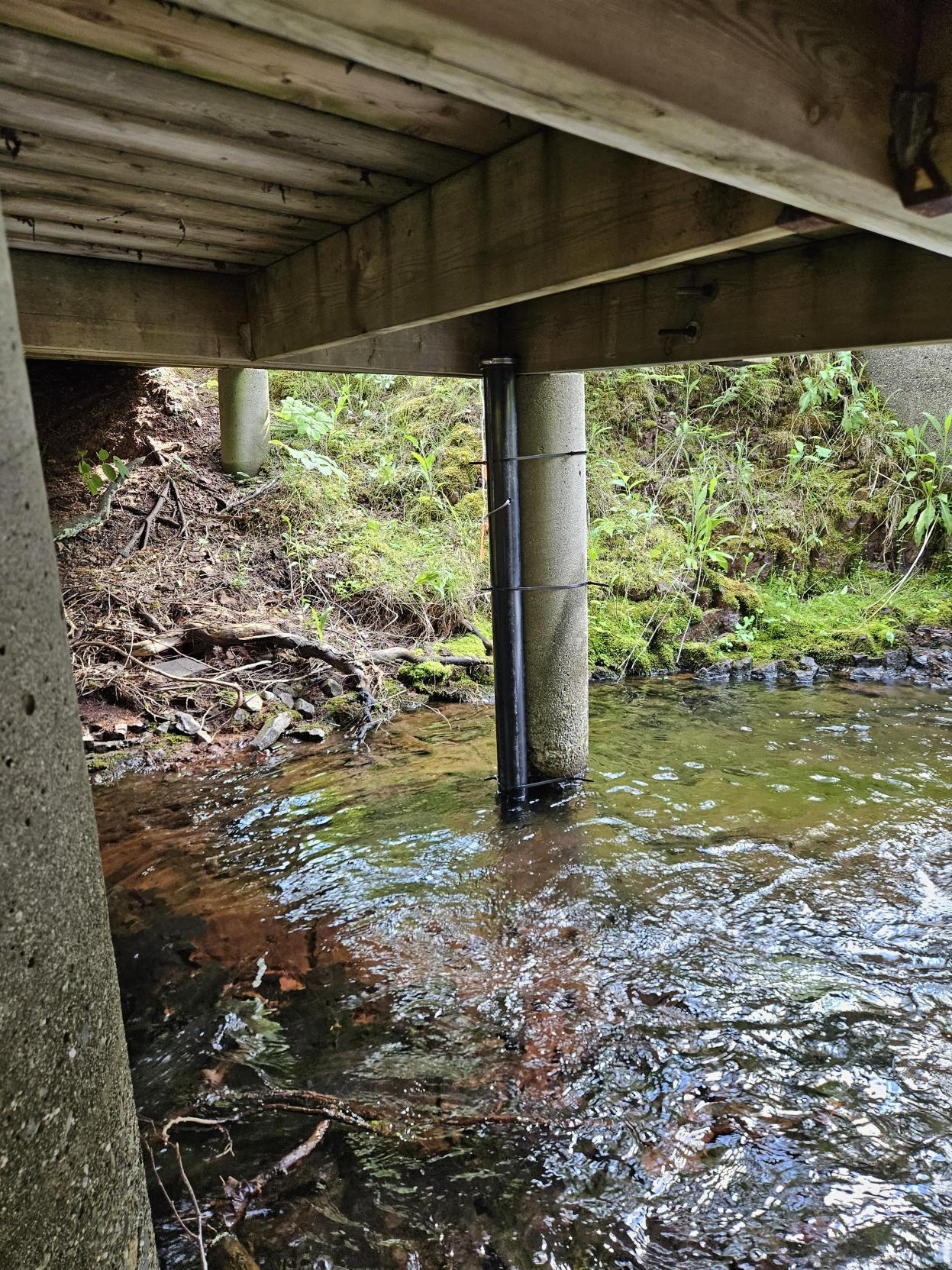
This week in Prince Edward Island, we have a report from one of our affiliates, Ellen’s Creek Watershed Group, on their work so far this summer. Ajhma Dhakal, the Watershed Manager for Ellen’s Creek Watershed Group, writes:
“Ellen’s Creek Watershed Group (ECWG) is a non-profit, community-driven organization dedicated to protecting and restoring the Ellen’s Creek Watershed. Our focus spans several Charlottetown neighbourhoods, including West Royalty, Sherwood, Parkdale, and parts of Winsloe and Hillsborough Park.
Here are a few highlights from our summer activities so far:
Tree planting: In partnership with the City of Charlottetown, we have been actively planting trees in various locations such as Charlottetown Rural, Windsor Park, Meadow Park, the Confederation Trail, and the West Royalty Community Centre. These efforts are focused on increasing green spaces across the city and restoring tree canopy coverage to previous levels while aiming to go even further.
Water Quality Monitoring: Our crew has been collecting water samples from 16 sites to test for Total Suspended Solids (TSS) as part of our ongoing water quality monitoring. TSS refers to tiny particles such as dirt, sand, and other materials that float in the water and make it look cloudy or unclear. When TSS levels are high, the water becomes less clear, which blocks sunlight from reaching underwater plants and can harm fish and other aquatic life. Regular monitoring helps us track changes over time and make informed decisions to protect and improve the health of our watershed.
Arbor Day Celebration: We spent a wonderful morning at Victoria Park celebrating Arbor Day with students from Prince Street, Parkdale, and West Kent elementary schools. The students had the opportunity to plant their very own native Acadian trees and learn about local flora and fauna. This event was organized by the City of Charlottetown and provided a great opportunity to connect young people with nature and stewardship.
MacroInvertebrate Survey: In June, our crew conducted macroinvertebrate surveys at 13 of our sites. Macroinvertebrates like aquatic insects and worms are excellent indicators of stream health because different species respond differently to pollution and changes in habitat. By sampling and identifying these tiny organisms, we can assess water quality and overall stream conditions. The data we collect help us identify any areas of concern and guides our restoration priorities. We’re excited to continue this work throughout the summer and fall. For more updates on our projects and upcoming activities, follow us on social media!”
In Nova Scotia, the Chéticamp River Salmon Association (CRSA) is gathering data from wild, largely untouched, parts of the watershed. Jillian Baker, with the Chéticamp River Salmon Association, sent us some of the details of this exciting new research:
“Exploring the Upper Reaches of the Cheticamp
By Jillian Baker, Cheticamp River Salmon Association
As part of ASF’s Wild Salmon Watersheds program, the Chéticamp River Salmon Association (CRSA) has been expanding its monitoring efforts throughout the watershed. This year, we’ve increased the number of temperature and water quality monitoring sites, including new data collection in some of the river’s more remote upper reaches.
CRSA President René Aucoin has had a long-standing interest in these upper tributaries, ever since CRSA began a focused water temperature study in 2017. After careful planning and preparation, he was finally able to join a recent expedition into this wild, and largely untouched, part of the watershed.
Navigating challenging terrain, the team succeeded in accessing key locations and gathering long-awaited data. These findings will help build a more comprehensive understanding of the watershed and guide future conservation efforts.”
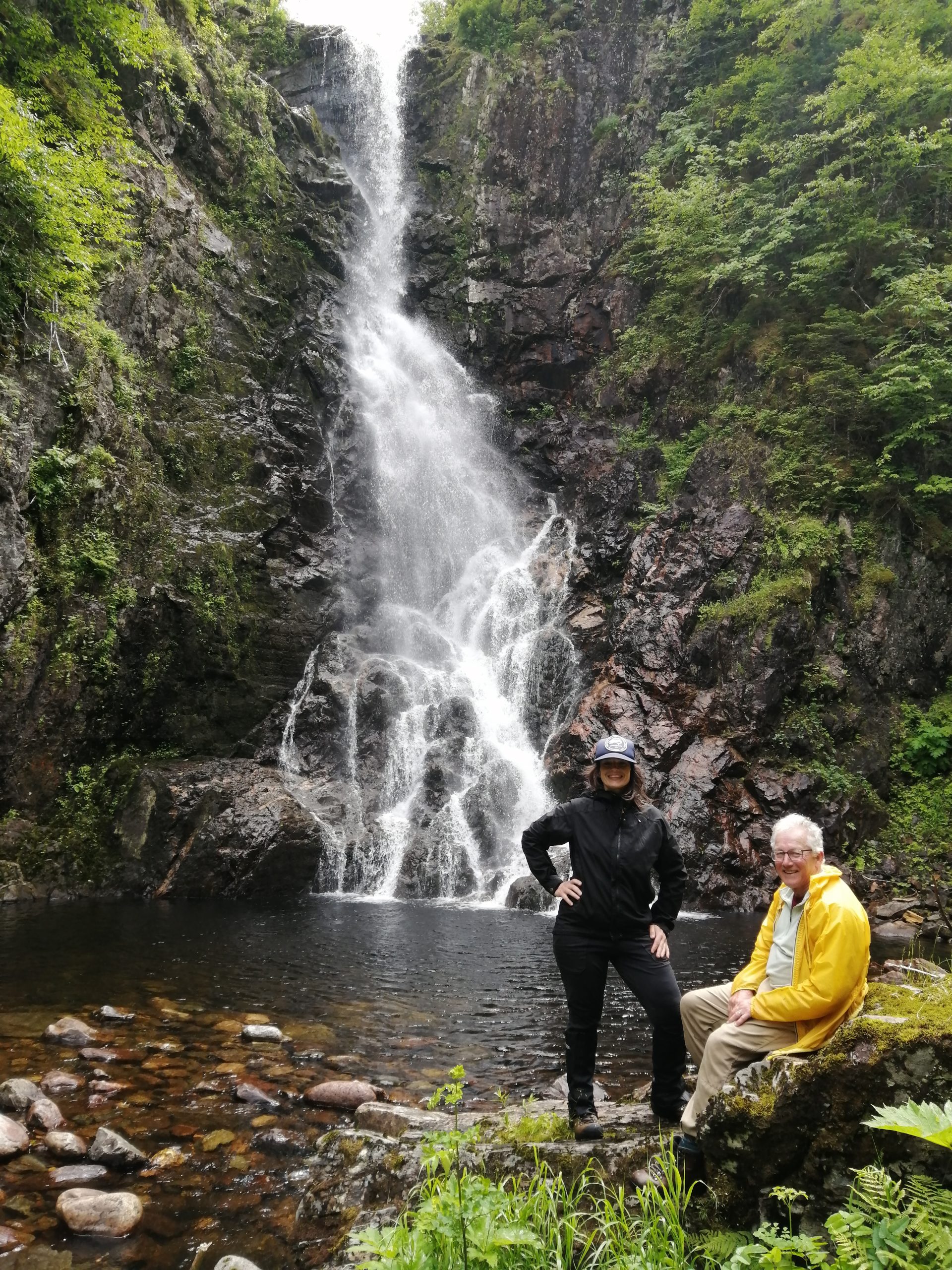
ASF’s Nova Scotia Program Director, Deirdre Green, got to join Fisheries and Oceans Canada as they investigated invasive species. There is suspected chain pickrel in one of the nearby lakes. She writes:
“I had the pleasure of joining Fisheries and Oceans Canada staff for a few days this week on their field mission on the St. Mary’s River and nearby lakes. They were investigating potential aquatic invasive species, including suspected chain pickerel in Fifth Lake. With boat and shore teams covering key angling areas across the watershed, the group worked together to monitor headwaters and salmon habitat.
I joined the DFO crew on Days 2 and 3. We covered sites on the North Branch and main stem, and were once again reminded of the dedication and camaraderie that drives this work forward — even in the bugs, heat, and wild terrain of July field days. One peaceful highlight was spotting several loons with their chicks gliding quietly through the still waters. A beautiful reminder of the life these rivers support.”
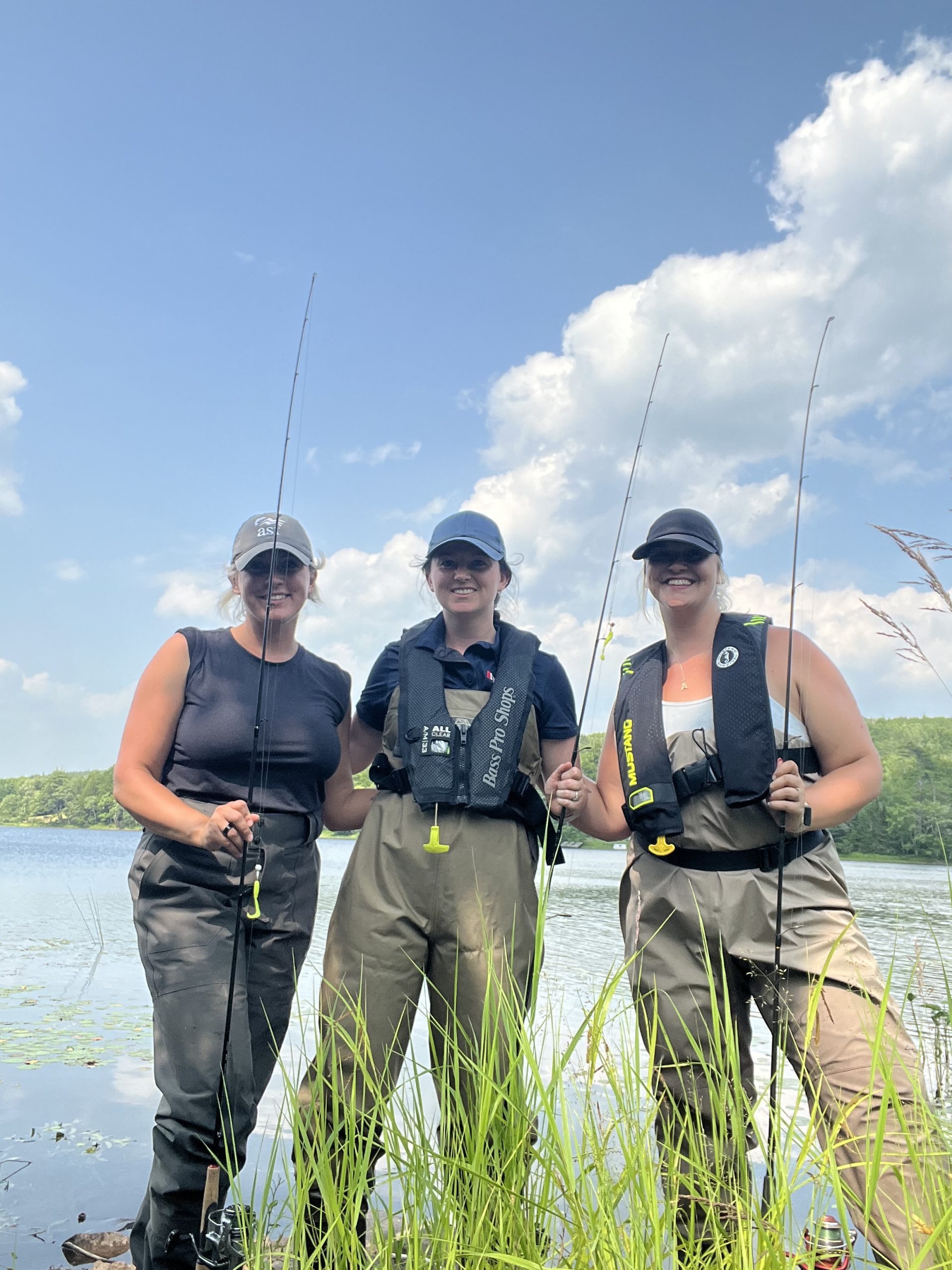
This week we also received a submission from Iris Ciecko about a “flybrary” — a fun, generous, community-minded project. She writes:
“Keeping in the tradition of fly libraries, Rudy Ciecko constructed a nice wooden one, with a plexiglass top, a foam mat and around 20 salmon flies, all tied by Rudy.
There is a small “flybrary” pad adhered to the metal frame of the Ross Bridge up on West Interval Road. It is well used, and as soon as we arrive each June, we fill it. The etiquette on a flybrary is take one, leave one. Although on occasion, people fill their boxes.
There is a fly shop in Margaree, The Tying Scotsman, and Alex would be happy to fill your box for you, with recommendations on which flies to use.
However, anglers appreciate one another being respectful at the flybrary. Rudy had decided that the warming shack located at Gillis Island — which was placed there by Micheal Hilton years ago — would be a good spot for a flybrary, and Mike Hilton agreed.
In the nature of improving the Margaree River you are welcome to visit the shack, take a fly, leave one. What better way to promote the angling community on the island.”
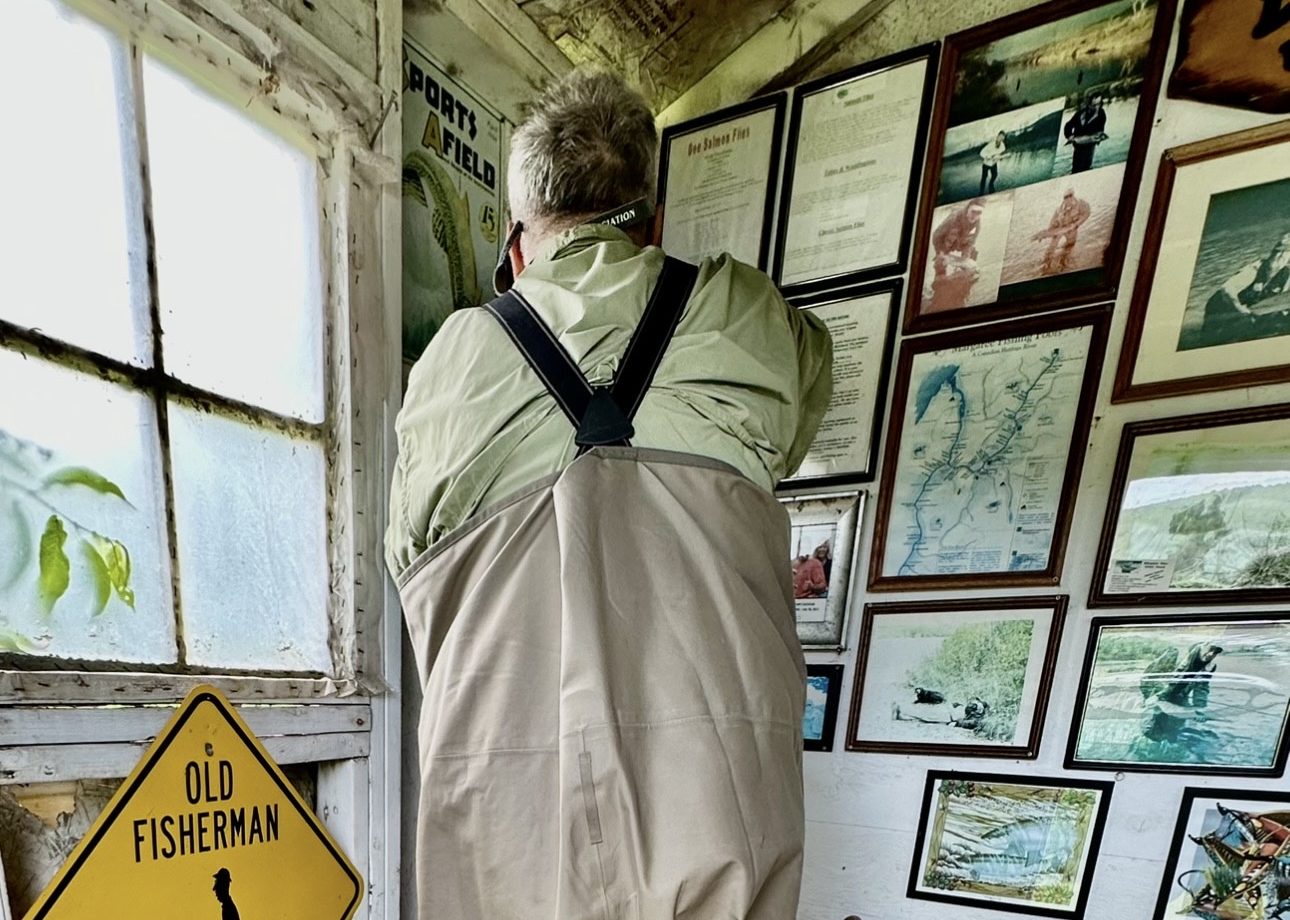
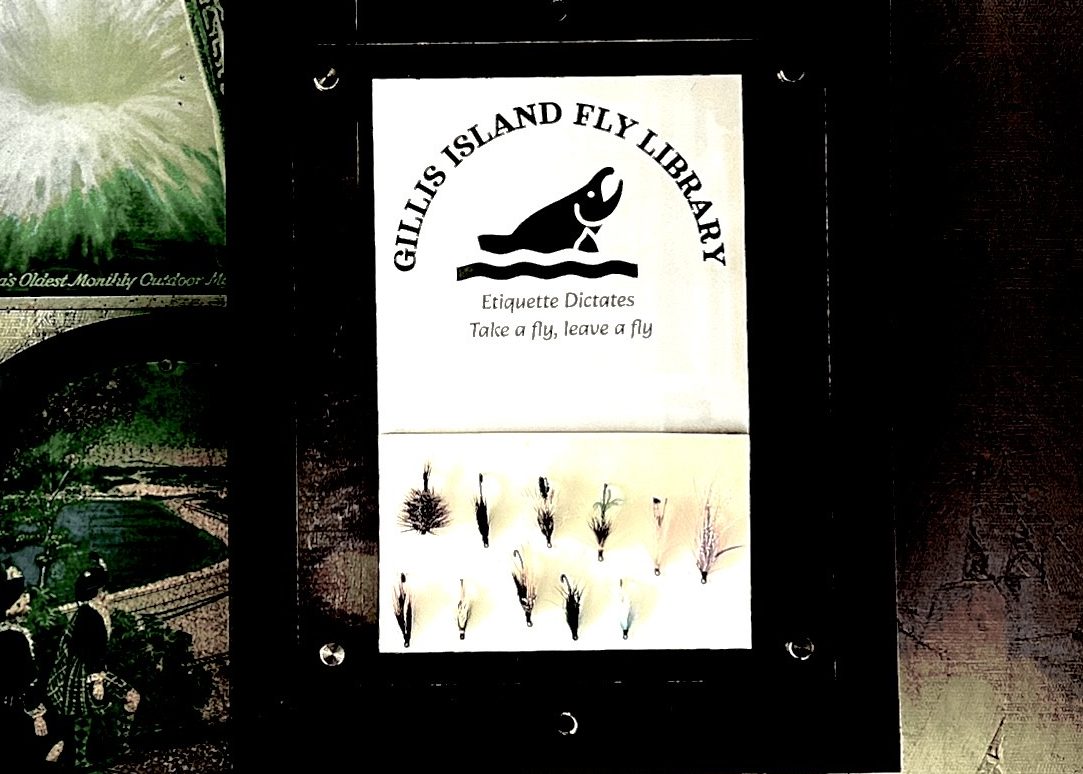
In Maine, water conditions are getting low and warm. Jason Valliere, the Marine Scientist with the Maine Department of Marine Resources, sent us this quick update for the Penobscot River:
“It looks like we have hit the summer slowdown; there is not much going on in the river… River temperatures have been between 24°C and 27°C (75°F-80°F) – temperatures displayed in the report are recorded in the morning and are essentially daily lows, with afternoon temperatures being much warmer.”
Jennifer Noll, the Marine Resource Scientist with the Maine Department of Marine Resources sent us updates for the Kennebec and the Androscoggin rivers:
“This week’s mean air temperatures were similar to last week’s – which varied between 65-78°F – with highs ranging from the low-70’s to the mid 80’s (°F) and lows ranging from the low 60’s to 70°F. Flow conditions in the lower Kennebec River have been quite variable over the past week. The low discharge for the week dipped to 3,060 cfs and the high peaked at 5,960 cfs. Currently the river flow is at 4,850 cfs, which falls between the median discharge level (4,550 cfs) and the mean discharge level (5,310 cfs) (https://waterdata.usgs.gov, based on 39 years of data). Lockwood fish lift, located in Waterville, ME at the first dam on the mainstem Kennebec River, opened on May 1st for the 2025 season. The trap has been operational the entire week. Fifty-four new Atlantic salmon have been captured to date; the first two arrived on 5/30. We’ve had a few special appearances so far this year – one wild female 3 sea-winter (89cm) on 6/8 and one wild female long absence repeat spawner (84.5cm) on 6/11. The water temperature has continued to warm – it was 23°C during the most recent salmon capture.
Brunswick fishway, located in Brunswick, ME on the mainstem Androscoggin River, was opened May 1st this year. Flow conditions have continued to be variable this past week in the lower Androscoggin River, reaching a low of 2,010 cfs and a high of 4,200 cfs. Currently, the river flow is at 2,200 cfs, which falls between the minimum discharge level (634 cfs) and the 25th percentile discharge of 2,840 cfs (https://waterdata.usgs.gov, based on 96 years of data). The temperature currently ranges between 22.9°C and 25.2°C. The first Atlantic salmon at Brunswick in 2025 showed up on 6/13.”